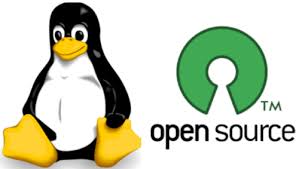How relationships can help you find the curve drivers
for employee churn
The old saying
“employee's leave a bad manager, not a bad company” may have allot of truth to
it but it’s not the full story. A leave decision by an employee is often
made after considering a wider set of criteria internal and external to the
company including points of a more personal nature.
Did you ever note that exit
interviews often provide a “nice” picture of the company by the exiting employee
with a less flattering account on Glassdoor? This begs the question, what
drives an employee to leave the company? Bad Manager? Sure.. this is a regular
reason but not the only one… What about role, environment, organisational
structure, peers, subordinates, other “silos” in the organisation, customers,
3rd parties, under use of talent, over use of talent and of course
compatibility with company culture??? Do they factor in the decision to leave?
Forbes ran an article producing employee survey results where 31% of
chronically overworked employees thought of leaving the company for another job
and 15% of employees who ranked company culture poorly were of the same
mindset. So, spinning up the correlation engine, what element has a strong
correlation with everything else in the decision for an employee to leave?
“Relationships” is the answer. How they are structured is critical to
understanding and addressing the reasons for employees leaving, which range
from small issues to structural issues within the organisation.
Does the fix sounds like
a big task? It sure does but if you approach it from an angle of starting with
the end in mind, you will see how your organisational structure, management
style, business process management infrastructure, leadership styles,
environmental management (Facilities & HR) and resulting company culture
impact the employee’s ability to conduct and maintain relationships in the
workplace. Contrary to popular belief, a normal person does not want to be a
millionaire at all costs, they want to be happy by making a positive impact on
their company and society in general. In order to be happy, an employee needs
to be reasonably able to maintain relationships in support of this overall
disposition within their company’s paradigm of existence. This is where
relationships come in with peers creating a good atmosphere and managers/leaders
supporting this through consultative leadership. This includes tactical
delegation of the appropriate amount of tasks that are framed in a genuine
manner as meaningful and important to the company. Many overlook this due to
“been busy”, which is counter productive as a valuable employee moving on will
make the leader even more busy coping with the loss of the employee and filling
their shoes in an unplanned manner! Good leaders count as does a good company.
In my quest for
understanding in new leadership roles over the years, my high level approach
implementing the above in a functional role has been the following:
- Know Your Team - Know your team, what frustrates them, what makes them happy and what creates obstacles in getting the job done (start with the end in mind)
- Know Who Interacts with your Team - Introduce yourself to management and leadership peers, find out what makes them happy, excited, frustrated and sad. Find out how they interact with your team
- Understand the process - understanding the business processes around what your team does and how it interacts with the company internal and external to customers and 3rd parties noting bottlenecks, inefficiencies and pain points for your team
- Research the Company culture and organisational structure - from experience there is no real point in creating an adhocracy sub culture in a company that has a dominant dictatorial culture. You will only be targeted at best by other “silos” if you succeed and it could send your team into even more disarray if you fail. Loosely align best practice to culture before you start to make changes as this factors into the happiness (& productivity) of your employees.
- Be a genuine leader - I have met many pretend leaders who care only for their own interests and come across as fake leaders out for themselves. Don’t be that guy, your employees cannot have a genuine relationship with a fake leader!
- Build together - as a believer in consultative leadership, I can tell you from experience that sustainable processes which work are built when collaboration (versus coercion) happens within a team in developing a process from the ground up. Its acceptance and deployment are far more successful then when a process is designed and deployed by force upon a team. We need to feel important in our roles and employees feel the same way, which is why inclusion not imposition needs to underpin any new team venture. After all, we need to know that what we do matters!
It’s a hard sell to some
and an easy sell to others based on belief and leadership orientation. Even if
you reject the above approach, just be consistent with your approach knowing
that relationships are key to employee retention. If you do, you become more
effective from the get-go leaving rest up to you…
About the author: John Mulhall is a Community Manager and newly Minted
Software Developer. John is also a committed blogger and from February 2016
onwards, will be publishing blogs every second week on topics around Technology,
Leadership and Sustainable Capitalism.
Sources/Credits:
Pics;
Credits;



